I’m a big fan of long leash dog training. I’ve been doing it with my own dogs for years, and it’s a great way to keep them happy and well-behaved while still getting the exercise they need. This blog post will give you an overview of what long leash dog training is and why you should do it.
I’ll also share some tips for success, including how to use a long leash to correct inappropriate behavior. Finally, I’ll highlight some benefits of long leash dog training. So let’s get started!
Got a Long Leash? Here’s How to Use It!
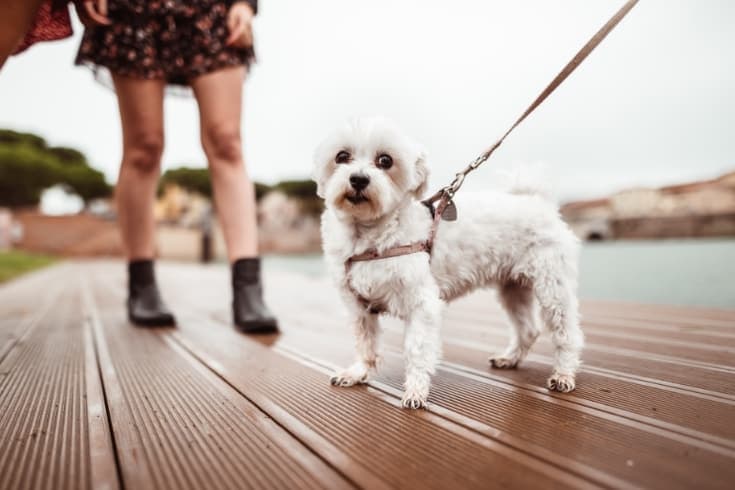
Many people think long leash dog training is simply a way to give your dog more room to run around. While this is certainly one benefit, there are many other reasons you should train your dog on a long leash rather than a short leash (about 1-2 feet). Foremost, long leash training is an excellent way to mold good behaviors and stop unwanted ones.
Long leash training is a great way to build trust between you and your dog. When you’re able to control your dog’s movements, he will know that you are the leader and he will be more likely to listen to your commands.
This increased level of trust can be invaluable when it comes time to train your dog for basic obedience commands and may save their life one day.
So if you’re looking for a way to improve your relationship with your dog and correct his inappropriate leash behavior, consider long leash training. It’s a safe, effective way to give your pup the exercise he needs and make sure he stays out of trouble.
What Is Long Leash Dog Training?
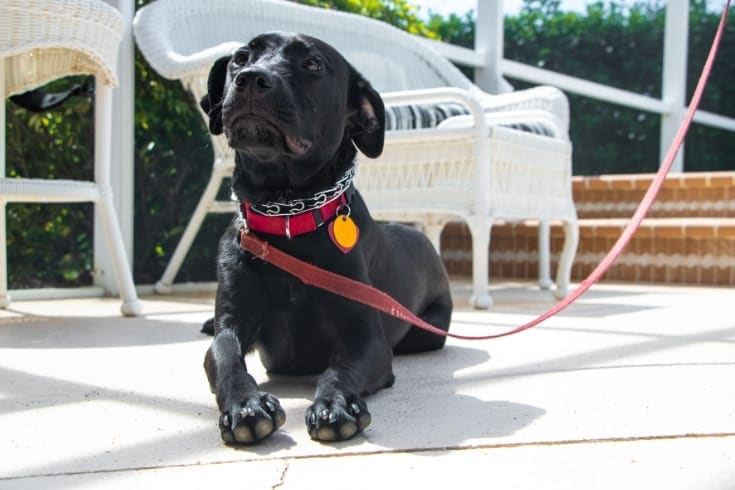
Long leash dog training is a great way to exercise and train your dog. The length of the leash can vary, but I usually recommend a 25-30 foot long leash or a shorter 15-foot leash. This type of training is beneficial because it allows your dog to get the mental and physical stimulation they need while still being under your control.
One of the key things to remember when doing long leash dog training is that you must be consistent in your commands and rewards.
If you are not consistent, your dog will quickly become confused, and the training will not be effective. Another important thing to remember is to have fun! If you aren’t enjoying yourself, chances are your dog isn’t either. If you keep these things in mind, long leash dog training can be a great experience for both you and your furry friend.
The purpose of long leash training is to ensure your dog’s safety by teaching them to consistently check in with you. By doing this, you are not only ensuring their safety but yours as well.
Having that 20-30 foot leash is a lot of responsibility, and having them check in with you constantly (by looking back and stopping, waiting for you, etc.) is crucial. Long leash training is a great way to bond with your dog and build trust between you and your furry friend.
It also allows you to keep them safe while giving them the freedom to explore their surroundings.
Benefits of Long Leash Training
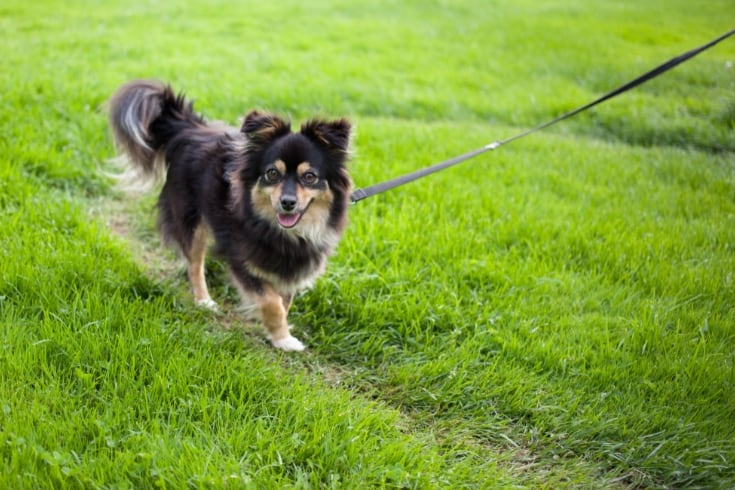
The benefit of long leash dog training is that it allows the dog to have some freedom while still being under the owner’s control. This is especially important for dogs who pull on the leash or jump on people when they’re excited.
With long leash dog training, you can quickly and easily correct these behaviors by giving a gentle tug on the leash or using a verbal cue such as “no” or “quiet.”
Another benefit of long leash dog training is that it allows you to work with your dog on a variety of different commands and behaviors. For example, you can use long leash dog training to teach your dog to sit, stay, come, down, heel, and more. You can also use this type of training to reinforce good behaviors that your dog already knows.
Yet another benefit of long leash training is that it helps your dog stay healthy and active. A dog who has plenty of room to run and play will be less likely to get bored and engage in destructive behavior. Additionally, exercise is essential for dogs and can help keep them calm and well-behaved. A tired dog is a happy dog.
The list of benefits is much longer than we’ve discussed, so here are a few more benefits if you’re having any doubts:
- Keeps dog under control
- Allows for freedom while still being under the owner’s control
- Can teach a variety of commands and behaviors
- Reinforces good behaviors
- Teaches them to check in with you often while out at all times
- Their recall will be much stronger in the long run (this could save their life!)
- Your dog will learn to trust you and form a solid bond
How to Train Your Dog to Walk on a Long Leash

The first step in long leash dog training is teaching your dog how to walk on a long leash without pulling or getting tangled up. This may take some time and patience, but it is important to be consistent with your commands and rewards.
I recommend starting by making putting on a leash fun and then walking around your house or backyard with your dog on a plain buckle collar and a simple leash.
Once they have mastered this, you can gradually increase the length of the leash until they are comfortable walking on a long leash. Remember to praise them often and give them treats when they are walking calmly by your side.
Once your dog has sniffed around and is acclimated to their new surroundings, it’s time to take a walk. Start by walking at a slow pace so that your dog can get used to having some slack on the leash. If they pull ahead or lag, simply stop and wait for them to catch up. This is all part of the leash training process.
Once they’re caught up, continue walking at a slow pace until they pull ahead or lag again.
As soon as your dog is comfortable walking at the heel position without pulling ahead or lagging, you can start increasing your speed gradually.
If they pull ahead or fall behind again, simply stop and wait for them again until they catch up. Once they’ve caught up, continue walking until they pull ahead or fall behind again. Repeat this process until your dog is comfortable walking at any pace without pulling ahead or lagging.
Tips for Success When Using a Long Leash
There are a few things you can do to set yourself up for success when using a long leash:
- Get a good quality leather leash that is comfortable for both you and your dog.
- Make sure you have plenty of treats on hand to reward good behavior.
- Start with short walks around your house or yard before moving on to longer walks in more challenging environments.
- Be consistent with your commands and rewards so that your dog knows what is expected of them.
- Have patience! Learning how to walk on a long leash takes time and practice for both you and your dog. But once you get the hang of it, it will be worthwhile!
Cues and Rewards
As with any type of training, cues and rewards are essential for success with long leash dog training. When first starting out, use treats as rewards for good behavior so that your dog associates behaving well with getting something they want (in this case, food).
As your dog gets better at walking on a long leash, you can gradually reduce the frequency with which you give treats as rewards.
Eventually, you should only give treats occasionally as rewards. Some other things you can use as rewards for good behavior include:
- Verbal praise
- “Good job,” petting/scratching
- Playing fetch
- Going for a car ride, etc.
- Praising them enthusiastically
- Using high-value treats
- Using high-value toys
It’s important to find what motivates your particular dog and use that as a reward. Doing this training will also help you master those leash handling skills in the event you need them to listen. Make these moments into fun games, and you’ll have a happy and content pup!
FAQs
Are long leashes bad for dogs?
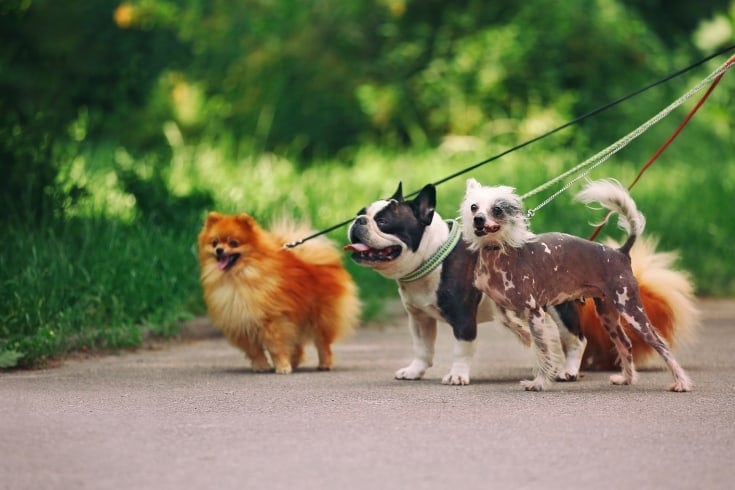
Although some people may think that using a long leash is bad for dogs, I disagree. A long leash can actually be a great way to train your dog and help them become more comfortable in new environments with proper training and socialization.
What are long leashes good for?
Long leash training is good for teaching your dog how to walk calmly on a leash without pulling or getting tangled up. It can also help them become more comfortable in new environments.
Additionally, using a long leash can be a great way to train your dog and reward them for good behavior. This will also give him an enrichment on walks that will keep his mind busy and not pull against that loose collar.
What should you not do when training on a leash?
Do:
- Start with short 5-minute walks around your house or yard before moving on to longer walks in more challenging environments.
- Be consistent with your commands and rewards so that your dog knows what is expected of them.
- Have patience! Learning how to walk on a long leash takes time and practice for both you and your dog.
Don’t:
- Yank on the leash or pull your dog towards you when they are not obeying commands. This can be very confusing and frustrating for your dog.
- Allow your dog to pull ahead or lag; stop and wait for them to catch up as needed or come back to you.
- Give up if your dog is having trouble learning how to walk on a long leash. With patience and perseverance, you can train them to walk calmly by your side.
How long should a dog leash be for walking?
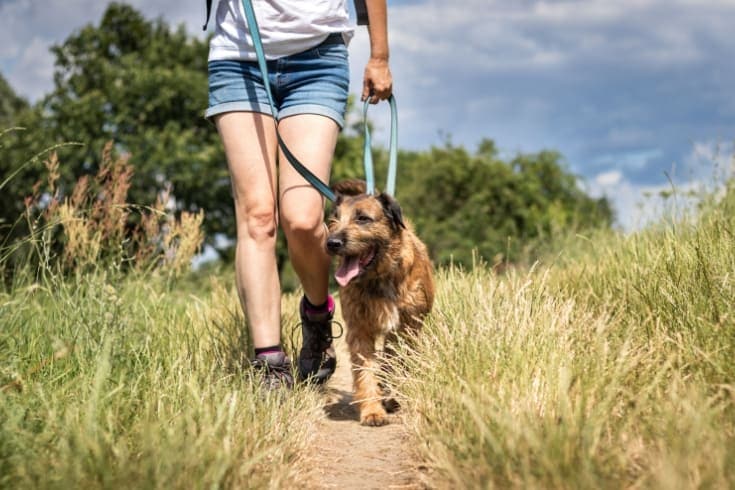
The type of leash you use is important, and it depends on your individual needs. I prefer a 6-8 foot leather leash with a soft grip. I find the leather leashes become very soft over time, and they are easy to handle while still being durable and reliable.
However, I do not recommend Flexi leads. These retractable leashes are asking for trouble, and you’re less able to control your dog. When choosing a leash, it’s important to consider your individual needs and the needs of your dog. Choose a leash that will be comfortable for both of you, and that will allow you to keep your dog safe and under control.
Conclusion
While I could go on about how trust is a disease and one that needs to be managed with training, this type of dog training is a great way to give your furry friend the exercise they need while still maintaining control. There are several benefits of long leash training, including building trust between you and your dog, correcting bad behaviors, and providing ample exercise. To get started, all you need is a long leash (a 10-20 foot drag leash will do, too), a comfortable collar or harness, some high-value treats, and patience! With time and practice, your four-legged friend will be a pro at long leash walking in no time!
